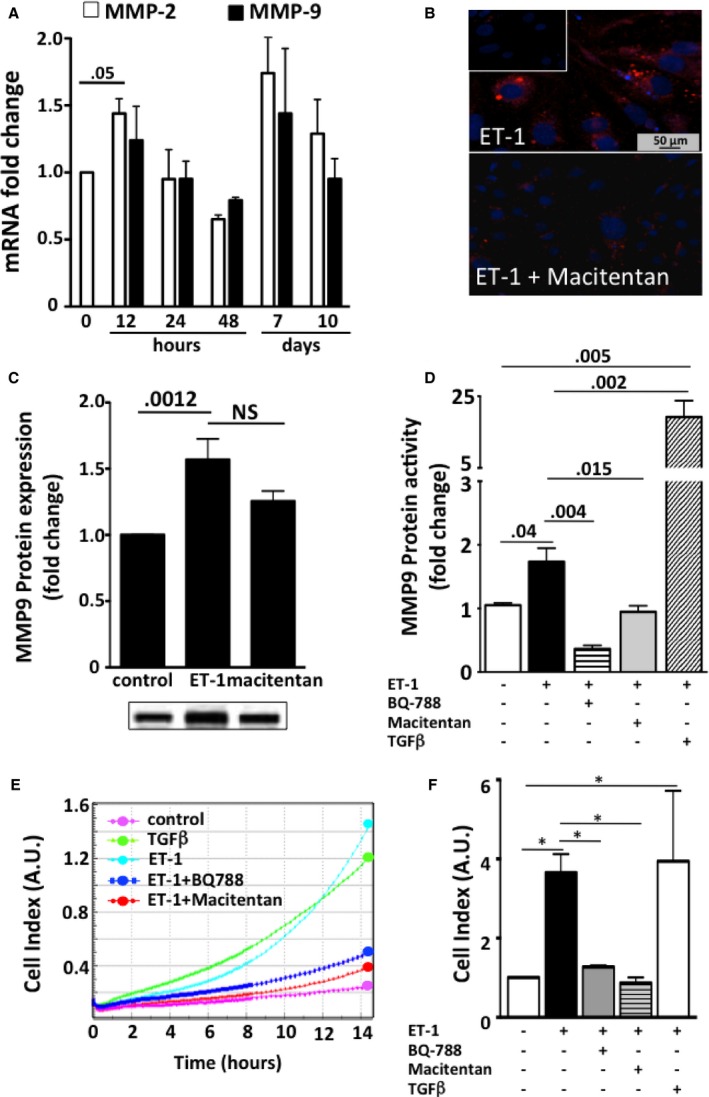Figure 7.

Gene expression of metalloproteinases (MMP) (panel A), immunofluorescence of MMP9 (panel B), protein expression of MMP9 (panel C), and cell migration after exposure of HK‐2 cells to ET‐1 (panel D). A, MMP‐2 transiently increased after 12 hours of exposure to ET‐1 (4 independent experiments, each in duplicate). No significant differences between times were found for MMP‐9 gene expression. B, MMP9 (red) in HK‐2 cells after incubation was evident after treatment with ET‐1 (top) and blunted after pretreatment with macitentan (bottom). The omission of primary antibody confirmed the specificity of the reaction (inset). C, MMP9 increased after treatment with ET‐1 for 7 days, and macitentan was effective in preventing its expression (3 independent experiments, each in duplicate). D, Because gene and/or protein expression cannot parallel enzymatic activity of MMP, we measured MMP9 protein activity in HK‐2 cells exposed to ET‐1 or macitentan or BQ‐788 on top of ET‐1 for 24 hours. Untreated cells were used for comparison (3 independent experiments, each in duplicate). TGFβ was used as positive control. E, Representative curves showing cell migration, as assessed with cell–electrode impedance detection‐based technology. ET‐1 (turquoise) was able to induce migration, similar to that induced by the well‐known EMT inducer TGFβ (green). Untreated cells (purple) were used as negative controls. ET‐1–induced cell migration was abolished by pretreatment with macitentan (red) and BQ‐788 (blue). A.U., arbitrary units. F, Cell index values recorded 12 hours after the treatment. Mean values of 3 independent experiments, each in duplicate. *P = 0.01.
